THE BIG STORY
Housing Market Seasonality vs. Expected Rate Cuts
-
Nationally, home prices hit an all-time high in June 2024, and we estimate that prices may have bucked seasonal trends and climbed slightly higher in July.*
-
In July, the average 30-year mortgage rate declined for the third month, falling to 6.78%, a 0.44% drop from the 2024 high reached in early May. The Fed is poised to start cutting rates in September, which tends to be around the time the housing market really slows before the holidays.
-
Sales fell 5.4% month over month and year over year, while inventory rose to its highest level since 2020. The combination of rising prices and high interest rates has kept sales historically low. Although the market is shifting in buyers’ favor, we still expect sales to decline for the rest of the year.
Rate cuts expected during slowest months in the housing market
In June, home prices reached all-time highs, continuing a trend of year-over-year growth despite expectations for a seasonal decline in July. Although high mortgage rates, slowing sales, and rising inventory typically signal a price drop, prices have remained resilient due to the pandemic-induced buying boom and the higher costs of selling and buying in the current market. The cost of financing a median home has risen significantly since 2021, but price appreciation has helped offset some of this increase. Inventory levels are at their highest since 2020, which should slow the rise in home prices. However, with no major sales boost expected until spring 2025, inventory could keep growing, and upcoming Fed rate cuts are unlikely to spur a buying frenzy in the fourth quarter.
BIG STORY DATA

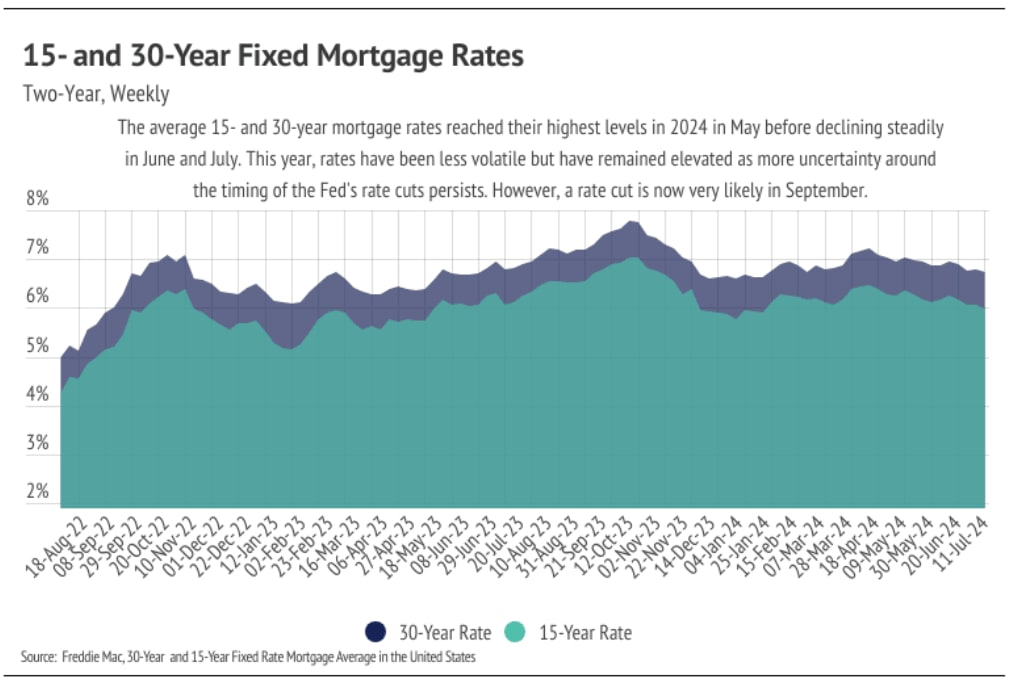
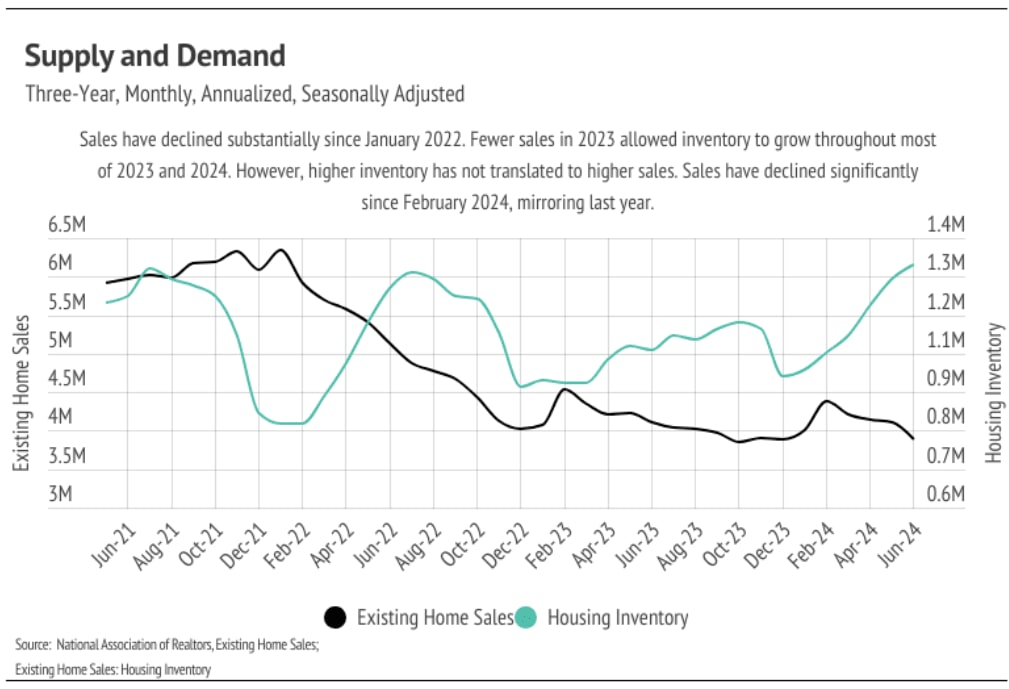
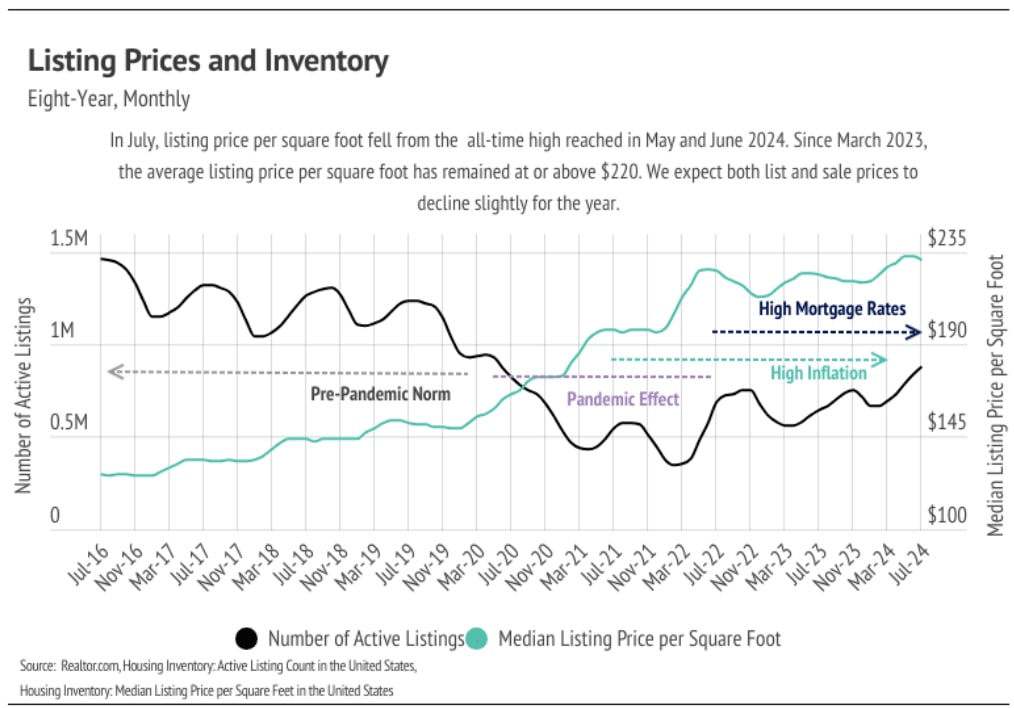
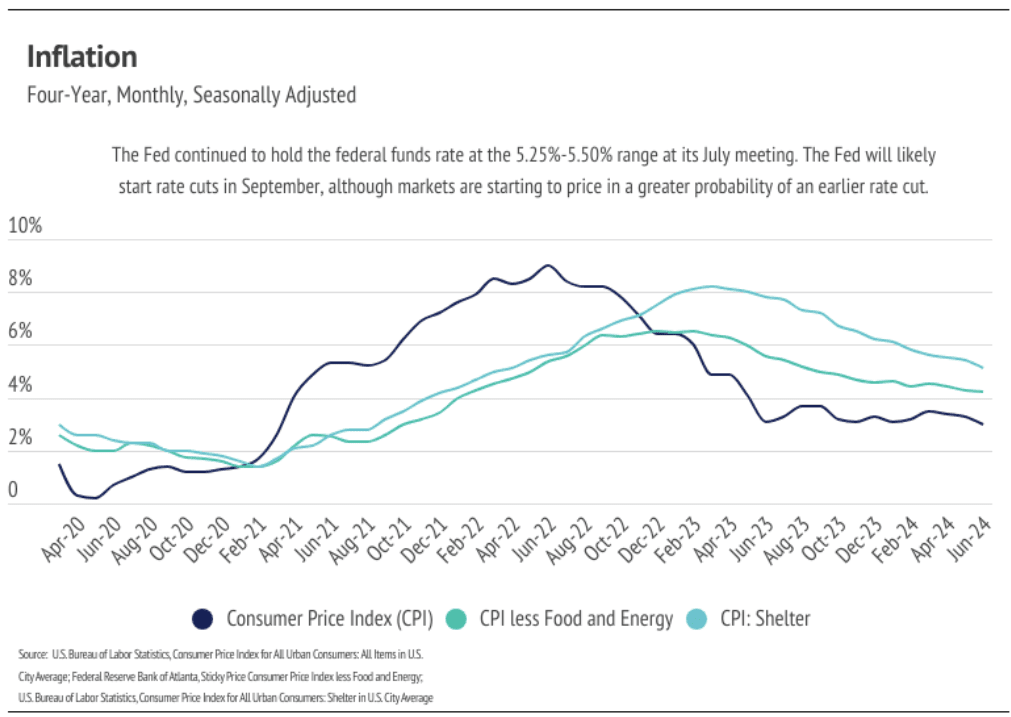
THE LOCAL LOWDOWN
-
Median home prices are slightly below peak levels across Silicon Valley. We expected price contraction after peaking in the second quarter, which is the seasonal norm. Prices will likely decline for the rest of the year.
-
Active listings, sales, and new listings declined in Silicon Valley month over month, which is normal this time of year. We expect inventory to decline and the overall market to slow as we make our way through the second half of the year.
-
Months of Supply Inventory fell in July and still indicates a sellers’ market in Silicon Valley for single-family homes and condos, although the condo markets in San Mateo and Santa Cruz are closer to balanced.
The median single-family home prices are near their all-time highs
In Silicon Valley, low inventory and high demand have more than offset the downward price pressure from higher mortgage rates. Prices in Silicon Valley generally haven’t experienced larger drops due to higher mortgage rates, and as mentioned in the Big Story, higher mortgage rates are contributing to prices staying high. Year to date, in July, the median single-family home and condo prices rose across counties with the exception of condo prices in Santa Cruz, which are lower. Year over year, prices increased most significantly for single-family homes, up 6% in San Mateo and Santa Cruz and 4% in Santa Clara. Prices typically peak in the summer months, so we don’t expect new all-time highs for the rest of this year. However, we do expect some minor price contraction in the coming months. Additionally, demand is high enough that it will create price support as supply declines in the second half of the year.
High mortgage rates soften both supply and demand, but home buyers and sellers seemed to tolerate rates near 6%. Now that rates are declining again, sales could get a little boost, but the housing market typically begins to slow this time of year.
Sales, new listings, and inventory fell month over month
The 2024 housing market has looked progressively healthier with each passing month. We’re far enough into the year to know that inventory levels are about as good as we could’ve hoped, although single-family home inventory is still lower than we would like. In 2023, single-family home and condo inventory followed fairly typical seasonal trends, but at significantly depressed levels. Low inventory and fewer new listings slowed the market considerably last year. Even though sales volume this year was similar to last, far more new listings have come to the market, which has allowed inventory to grow. Condo inventory even rose near 2022 levels. However, for single-family homes, even though inventory is up 18% year over year, it’s still 19% lower than it was two years ago.
Typically, inventory begins to increase in January or February, peaking in July or August before declining once again from the summer months to the winter. It’s looking like 2024 inventory, sales, and new listings will resemble historically seasonal patterns, and at more normal levels than last year. Now that we’re more than halfway through the year, we expect inventory, sales, and new listings to decline through the rest of the year.
Months of Supply Inventory fell in July, still indicating a sellers’ market
Months of Supply Inventory (MSI) quantifies the supply/demand relationship by measuring how many months it would take for all current homes listed on the market to sell at the current rate of sales. The long-term average MSI is around three months in California, which indicates a balanced market. An MSI lower than three indicates that there are more buyers than sellers on the market (meaning it’s a sellers’ market), while a higher MSI indicates there are more sellers than buyers (meaning it’s a buyers’ market). The Silicon Valley market tends to favor sellers, which is reflected in its low MSI. MSI trended higher in the second half of 2023, but never climbed above three months of supply. In Q1 2024, however, the Silicon Valley MSI fell significantly, before rising significantly in Q2. In July, MSI declined, indicating the single-family home and condo markets still favor sellers.
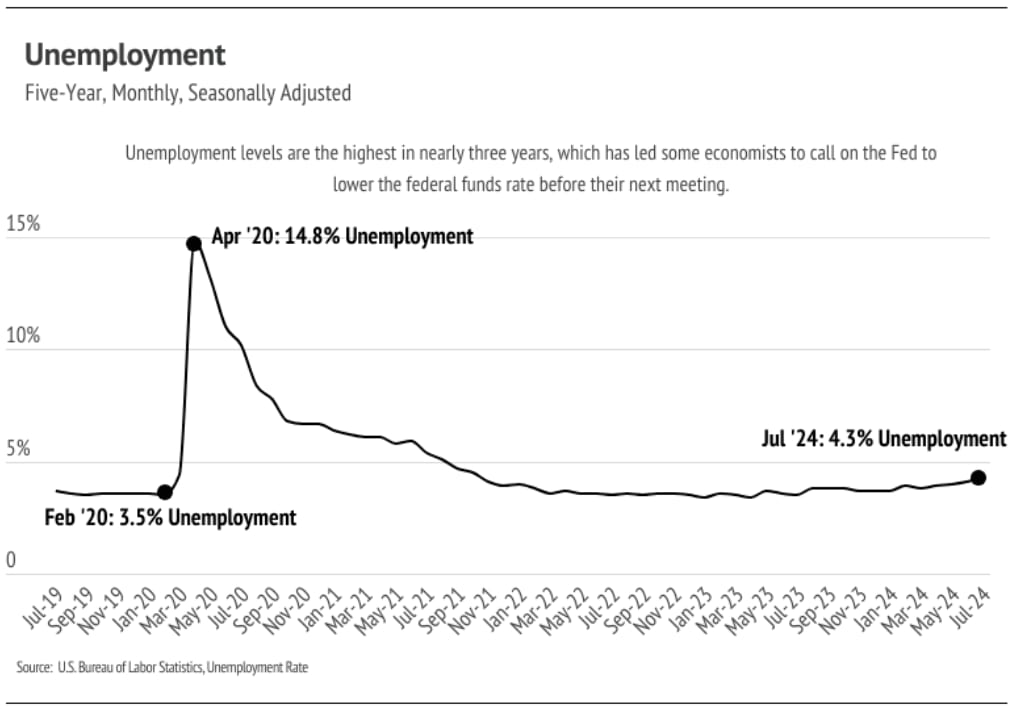
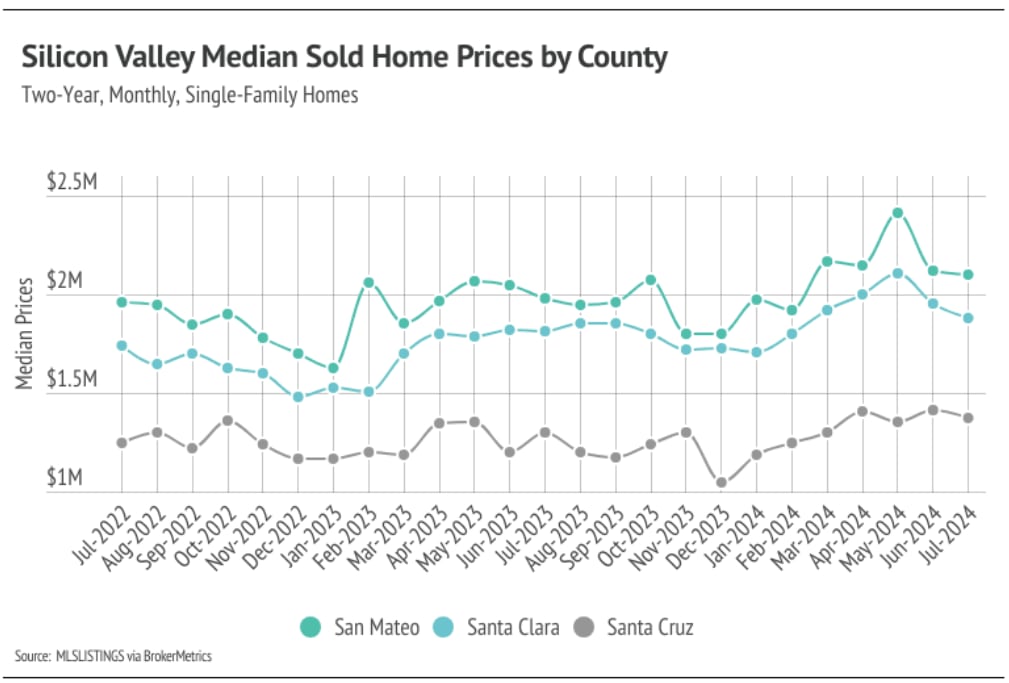


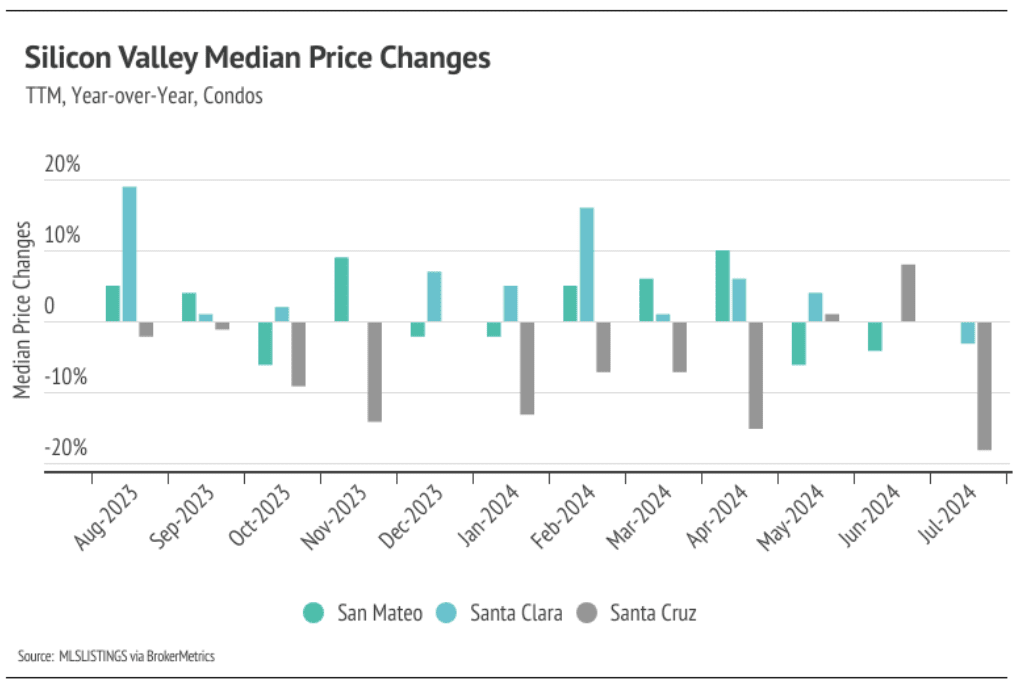
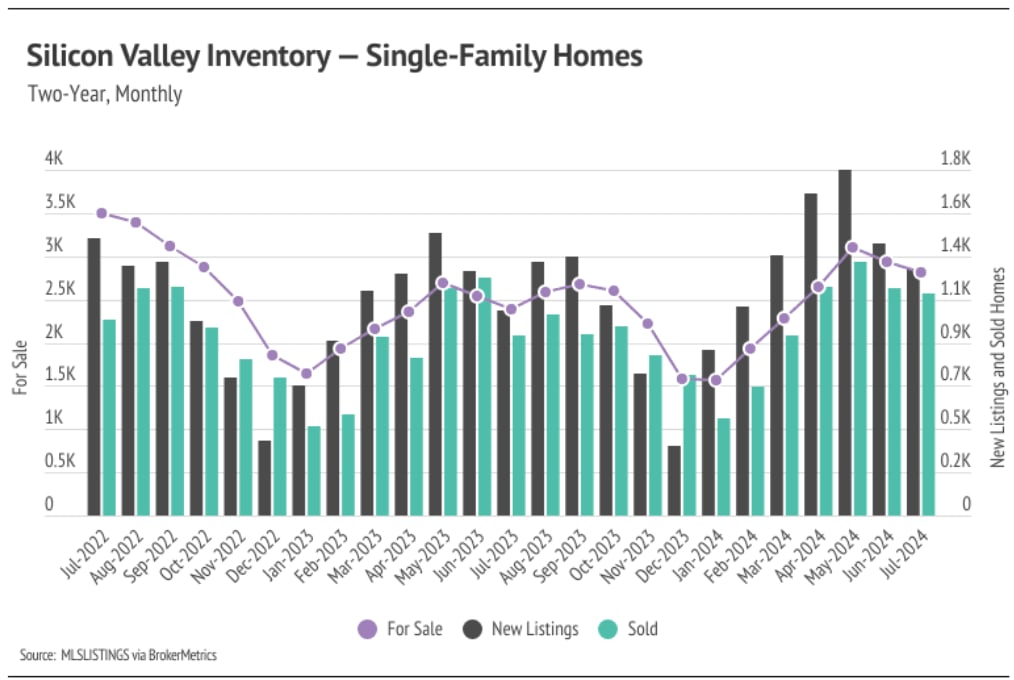


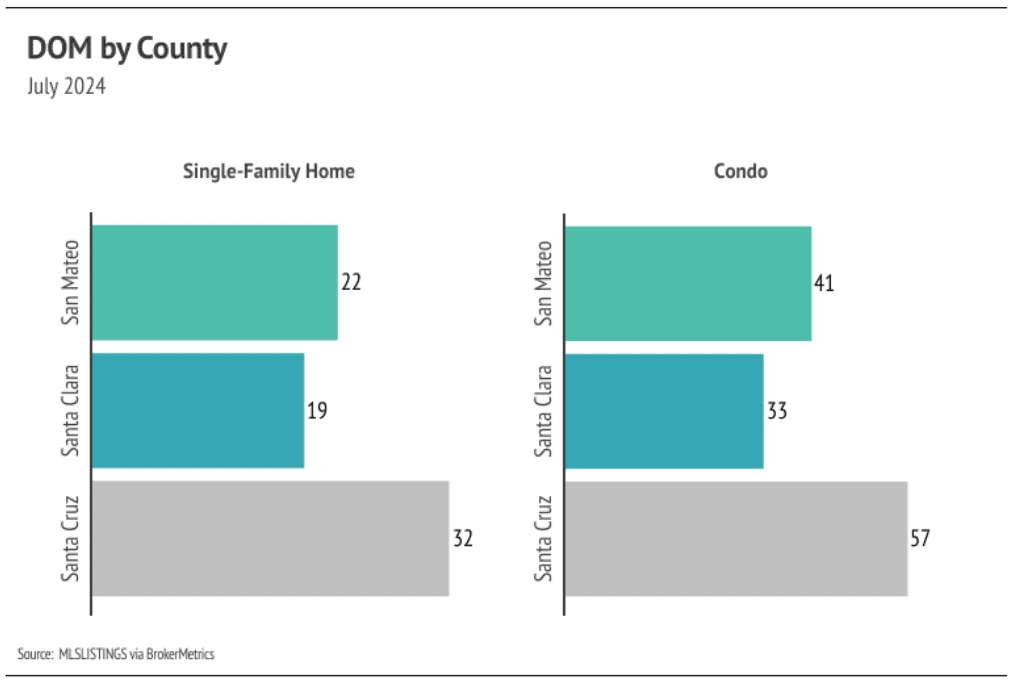
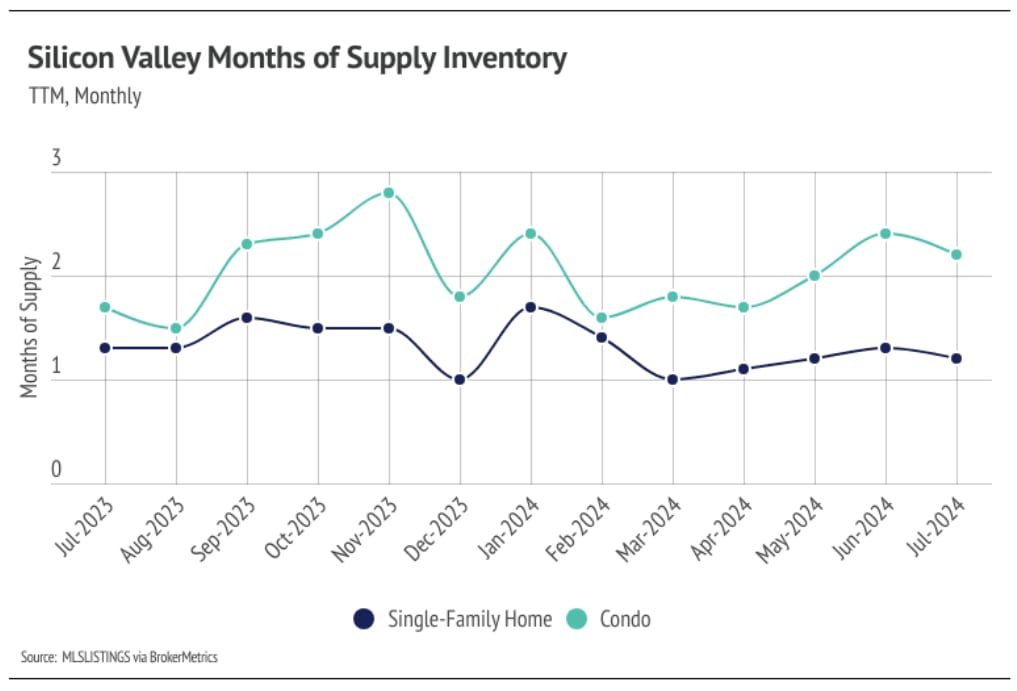

CLINK LINKS and FOLLOW US for more updates!










